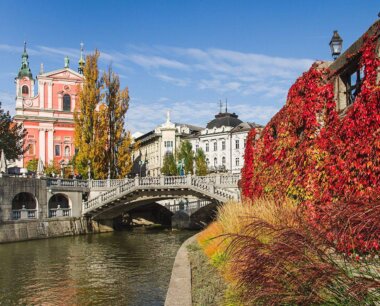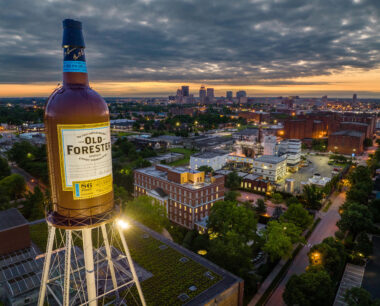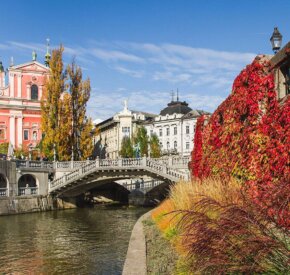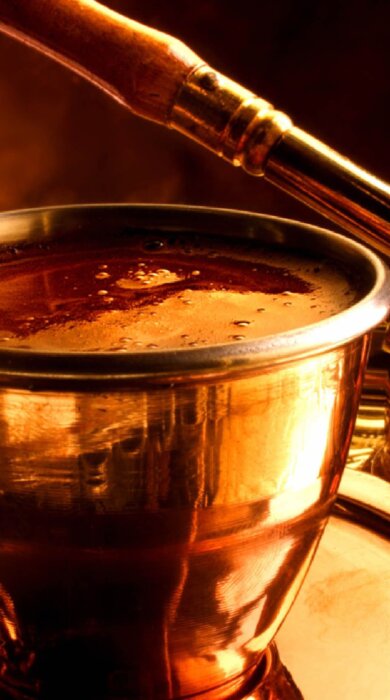
How to make Turkish coffee
Hot, strong and (occasionally) sweet, this traditional pick-me-up powers Turkey’s population. Here’s how to get a home-made hit
10 March 2016
Turkish coffee is made in a special pot called a cezve with a wide bottom, narrower neck, a long handle, and a spout and served in miniature teacups, known as finjans, which are narrow at the bottom and wider at the top. The cups are always made of porcelain and they hold a quarter of a regular cup at most.
A copper cezve yields the best results. There are different sizes of cezve available, manufactured according to the number of finjan of coffee you plan to make. For the best results, choose the correct size.
The heat level is also key: good coffee is made over very low heat. This gives the water time to really absorb the flavor and aroma of the ground beans. In the old days, coffee was always made over a charcoal fire. Today’s Turkish coffeemakers, on the other hand, are programmed to make a delicious Turkish coffee.
A copper cezve yields the best results. There are different sizes of cezve available, manufactured according to the number of finjan of coffee you plan to make. For the best results, choose the correct size.
The heat level is also key: good coffee is made over very low heat. This gives the water time to really absorb the flavor and aroma of the ground beans. In the old days, coffee was always made over a charcoal fire. Today’s Turkish coffeemakers, on the other hand, are programmed to make a delicious Turkish coffee.
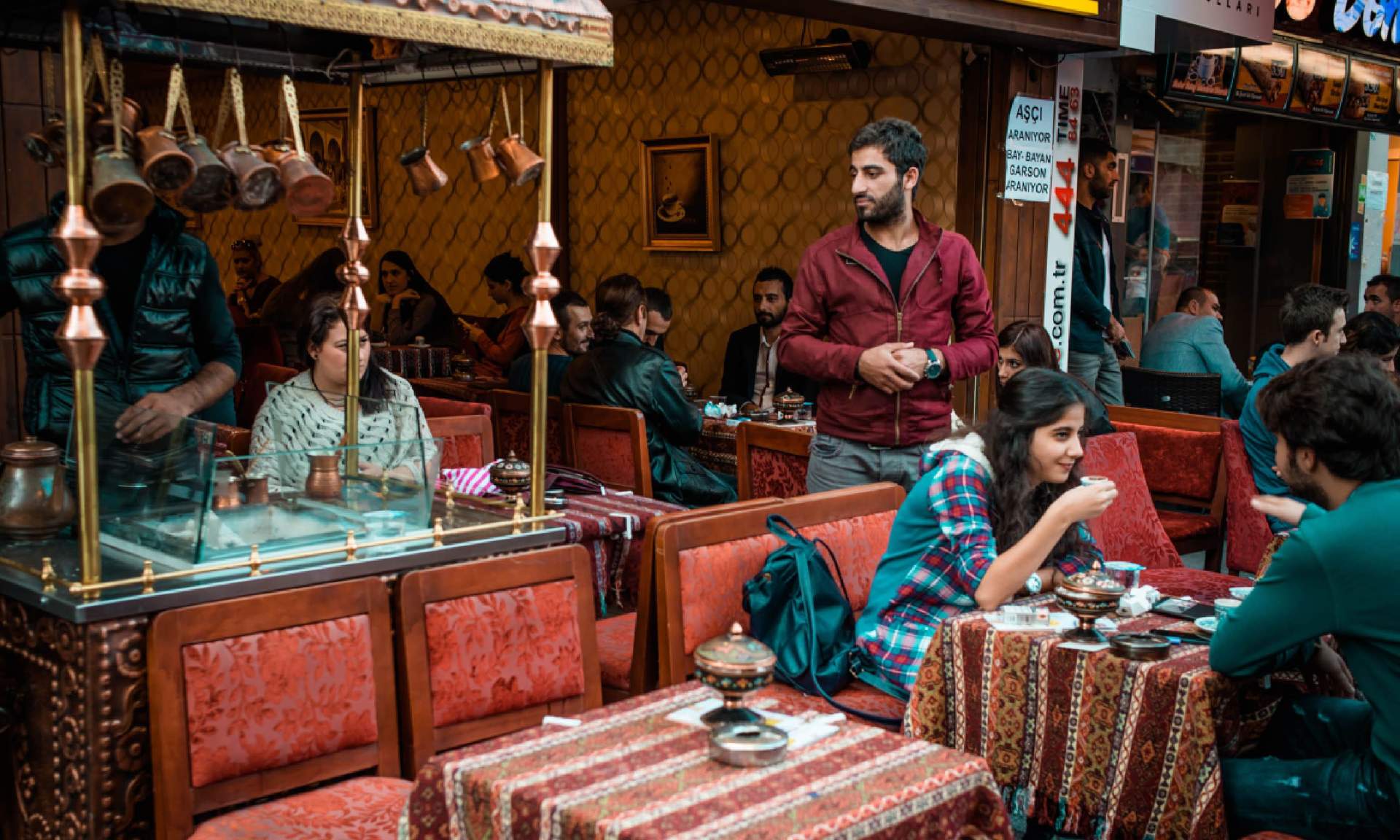
To make a successful cup, Turkish coffee must be made from a special finely ground coffee. Everyone in the household used to take turns grinding this coffee in hand grinders. Nowadays everyone buys their coffee from special coffee sellers already ground. These purveyors roast the beans and will grind them on request or sell the beans already ground in sealed packages. Coffee for espresso or drip machines will not work for making Turkish coffee.
During the Ottoman Empire’s reign, coffee was made from mocha beans brought from the port of Mocha in Yemen. But today, as elsewhere, it is mostly made from Arabica beans, usually from Brazil or Colombia, although recently, certain coffee-selling shops have started carrying the more delicate-tasting mocha beans. Why one finjan of coffee differs from another depends most of all on the roast of the beans. Some people like a very dark roast, while others prefer a medium or light roast.
During the Ottoman Empire’s reign, coffee was made from mocha beans brought from the port of Mocha in Yemen. But today, as elsewhere, it is mostly made from Arabica beans, usually from Brazil or Colombia, although recently, certain coffee-selling shops have started carrying the more delicate-tasting mocha beans. Why one finjan of coffee differs from another depends most of all on the roast of the beans. Some people like a very dark roast, while others prefer a medium or light roast.
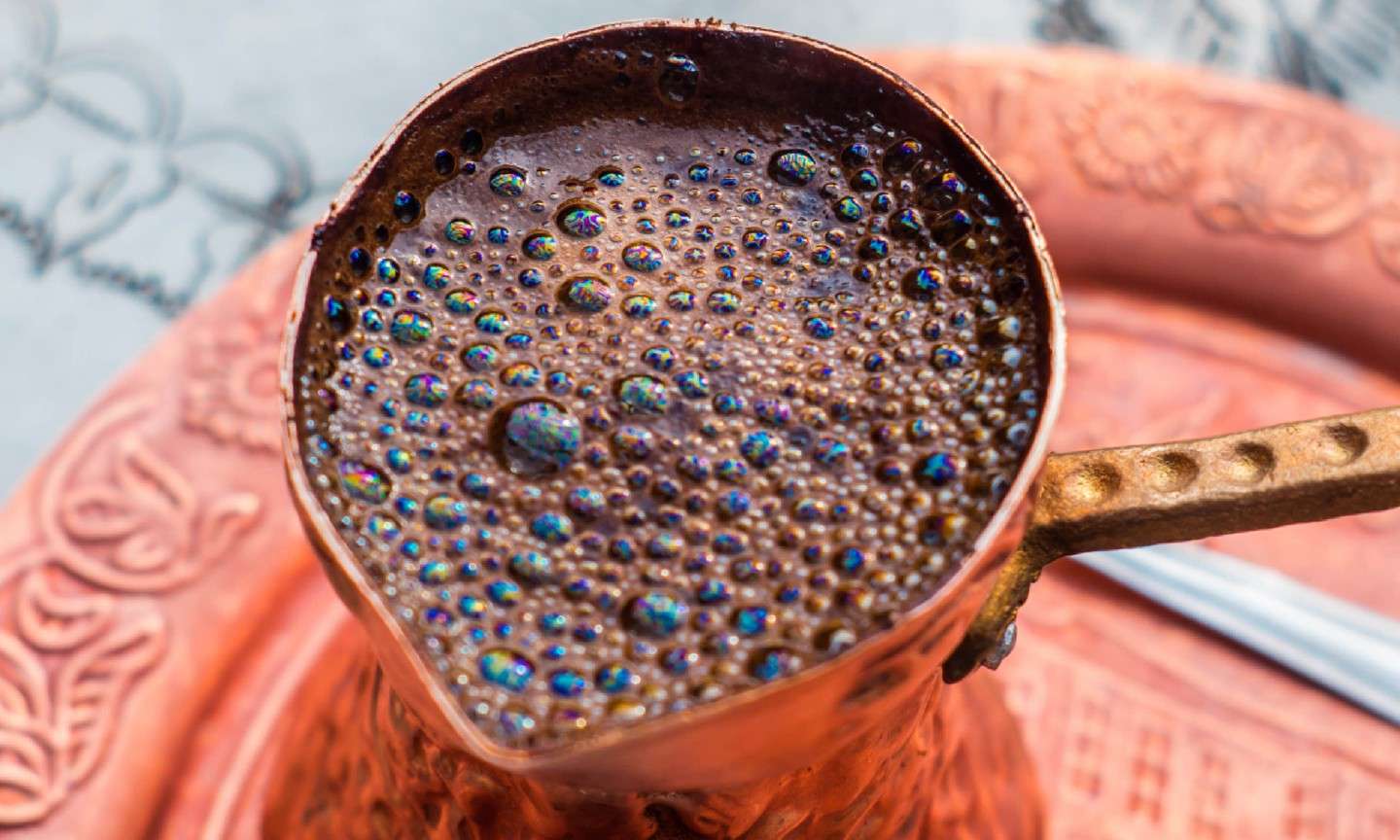
How much sugar do you fancy?
Turkish coffee is referred to as ‘with foam’ or ‘without foam’, but there are also four main tastes that designate the amount of sugar desired.
Sade: No sugar
Az sekerli: ½ to 1 teaspoon sugar
Orta: 1 to 1 ½ teaspoons sugar
Sekerli: 1 ½ to 2 teaspoons sugar
When making Turkish coffee, the cold water is measured, the sugar (if any) and the coffee are added, the two (or three) ingredients are mixed well and then heated, and the cooking is finished as you stand over the pot. When the coffee foams, and looks like it’s about to run over, it must be pulled away from the heat source immediately.
For those who like foam, you gently pour this foam into the finjan and let the rest of the coffee mixture come to a boil once again. To fill more than one finjan in a single batch, the foam is divided among the finjans. Dividing holds true for the rest of the contents of the pot, as each finjan should get an equal amount of coffee and residue. For those who like coffee without foam, the coffee has to be boiled for at least a minute as you pull the pot back and forth and stir.
Sade: No sugar
Az sekerli: ½ to 1 teaspoon sugar
Orta: 1 to 1 ½ teaspoons sugar
Sekerli: 1 ½ to 2 teaspoons sugar
When making Turkish coffee, the cold water is measured, the sugar (if any) and the coffee are added, the two (or three) ingredients are mixed well and then heated, and the cooking is finished as you stand over the pot. When the coffee foams, and looks like it’s about to run over, it must be pulled away from the heat source immediately.
For those who like foam, you gently pour this foam into the finjan and let the rest of the coffee mixture come to a boil once again. To fill more than one finjan in a single batch, the foam is divided among the finjans. Dividing holds true for the rest of the contents of the pot, as each finjan should get an equal amount of coffee and residue. For those who like coffee without foam, the coffee has to be boiled for at least a minute as you pull the pot back and forth and stir.
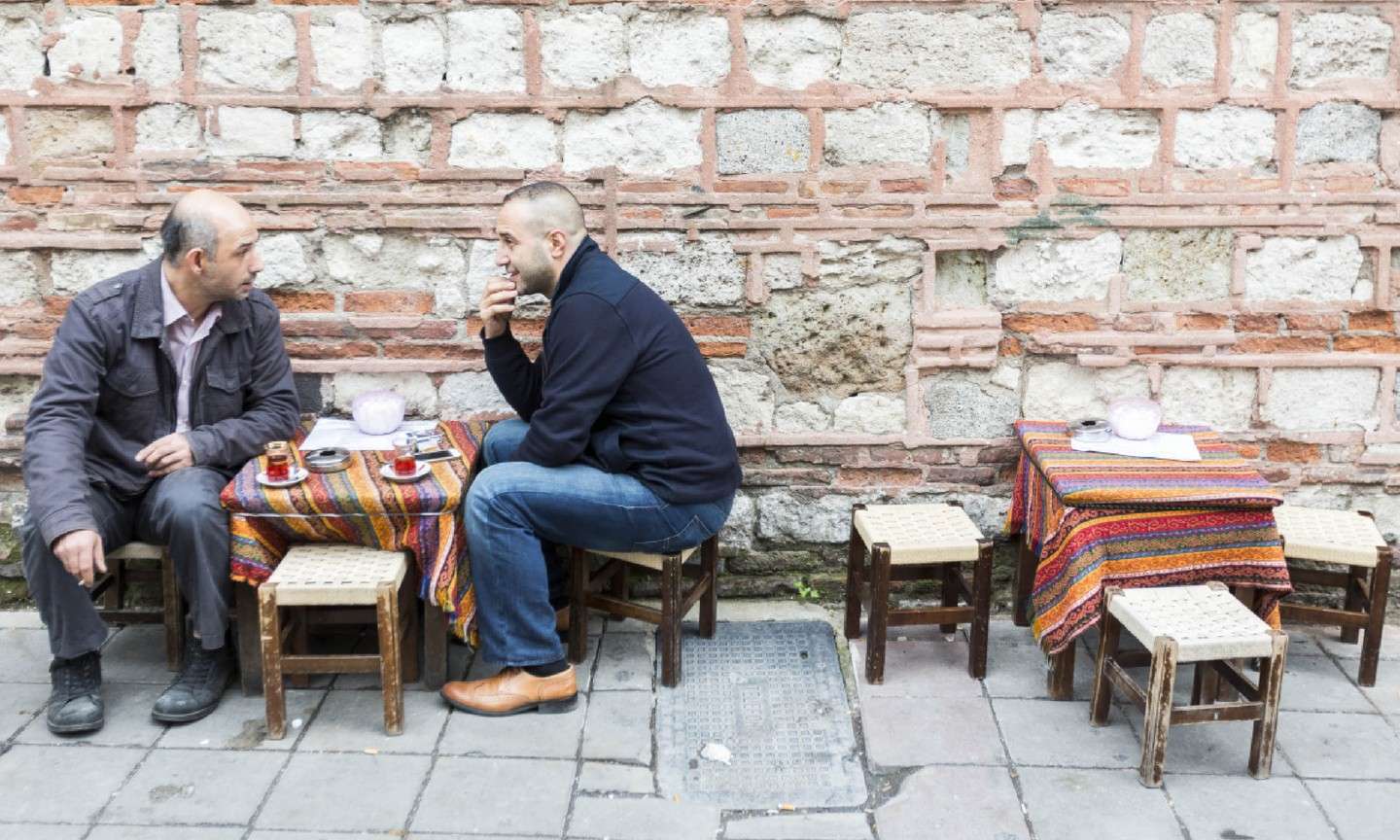
Drinking Turkish coffee in Istanbul (Dreamstime)
Since Turkish coffee is drunk slowly like wine, there is always time for the residue to sink down to the bottom of the finjan. At home, coffee is served on a small tray along with a small glass of water. The water is customarily drunk first so that you get full satisfaction out of the coffee.
The coffee residue is left in the bottom of the cup. This led to the practice of fortune reading based on the residue left in finjans. After several minutes, when the bottom of the finjan is cold, the fortune-teller will take it in her hands and tell you what she sees in the cup.
Today coffee is drunk at kusluk or any time of the day, and when two people get together, whether at home or outside, they will have a finjan of coffee.
How to make Turkish coffee with milk
This coffee drink may rightly be called indigenous to Turkey because it is made with Turkish-grind coffee, which is very finely ground – almost as fine as cocoa powder.
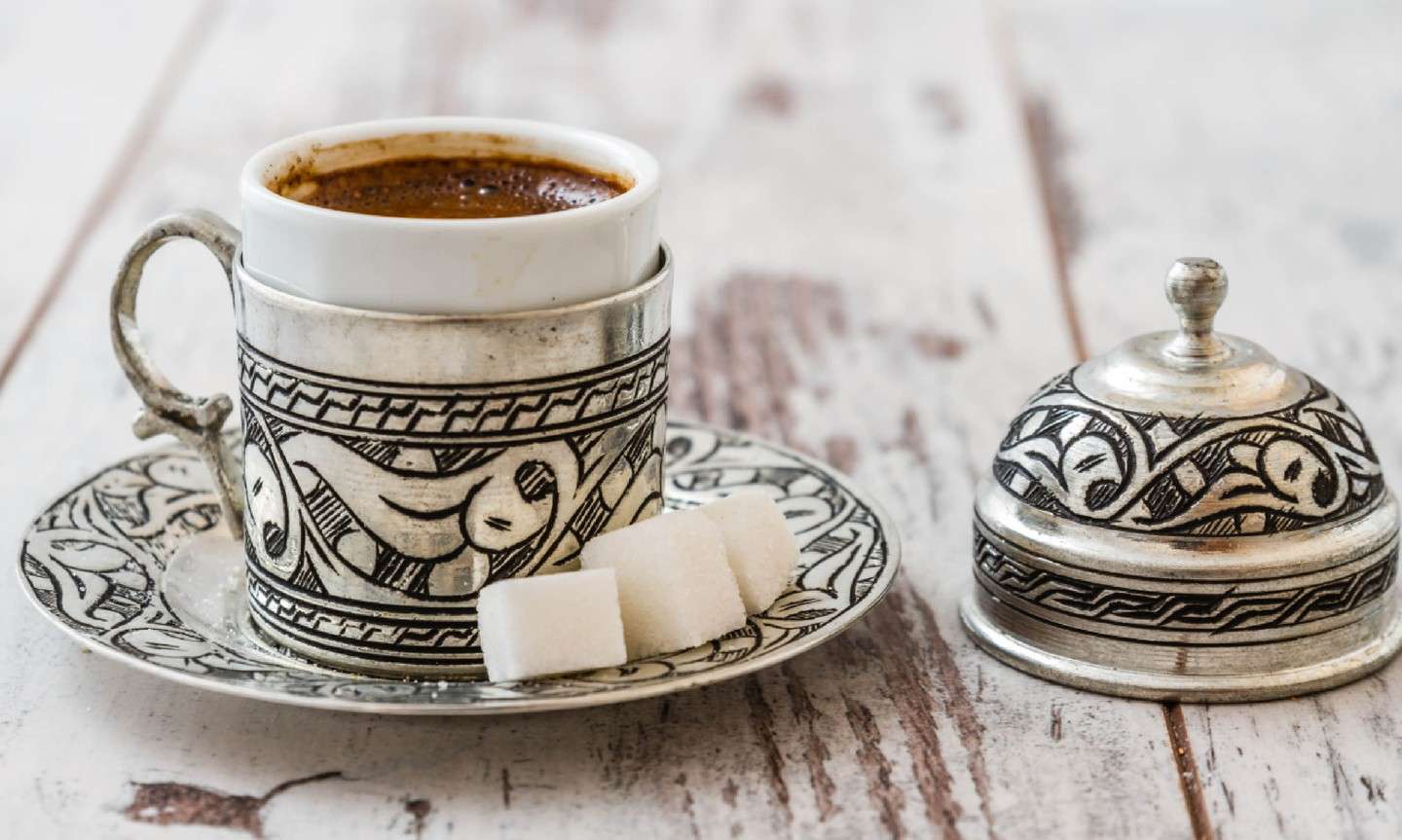
Turkish coffee served in a traditional silver cup (Dreamstime)
1 small tea glass of milk (75ml)
½ heaped teaspoon Turkish coffee
Sugar (optional)
Put the milk in a cezve or a small pan. Add the coffee and, if desired, sugar to taste. Cook over medium heat, stirring constantly. When the milk rises up, pour into a tea glass and serve.
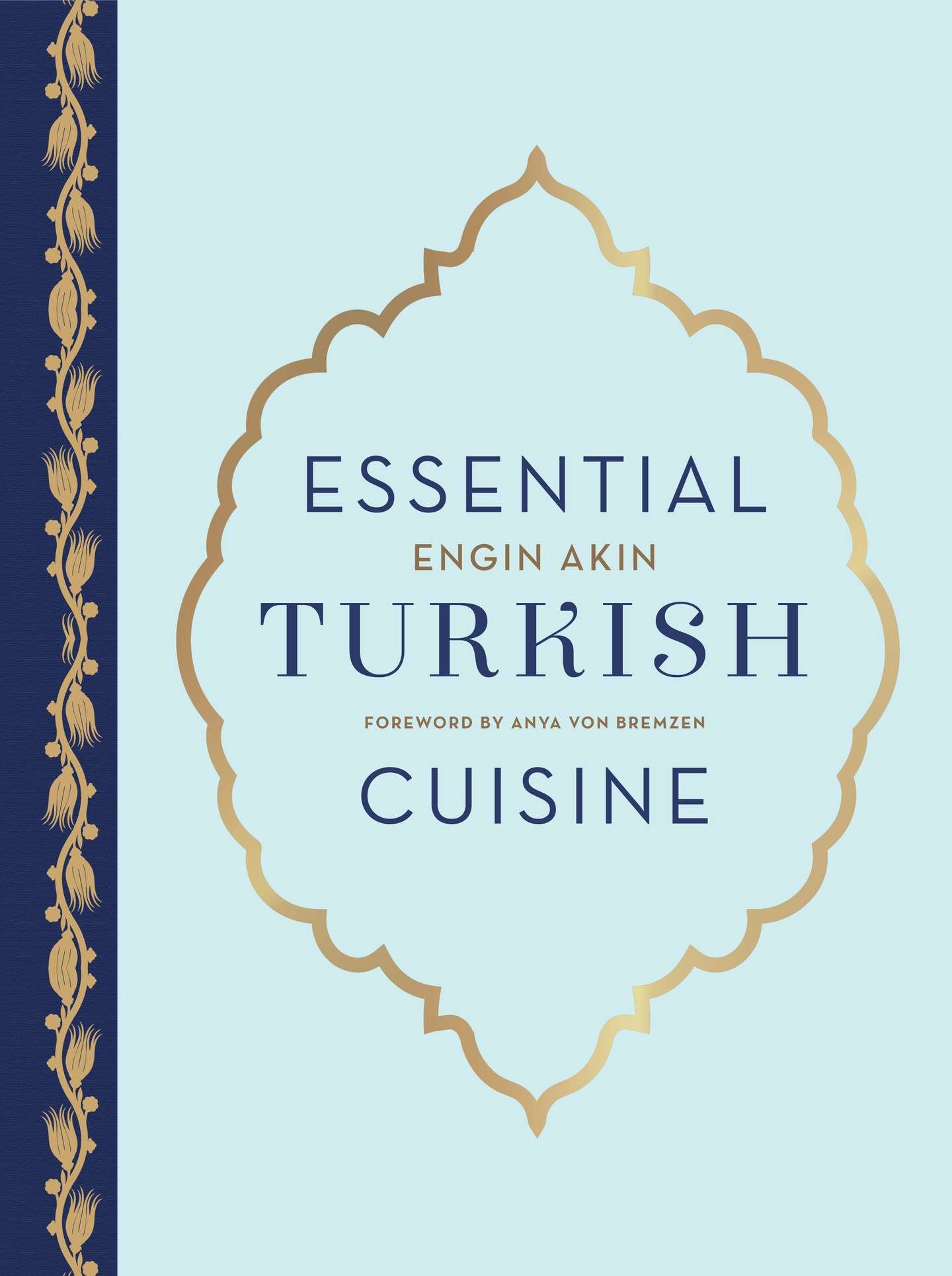
This recipe was taken from Essential Turkish Cuisine by Engin Akin, published by Stewart, Tabori & Chang (£25.00)
Main Image: Traditional serving of Turkish coffee (Dreamstime)
Main Image: Traditional serving of Turkish coffee (Dreamstime)
